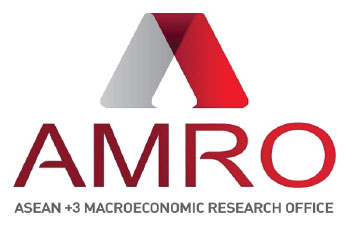Singapore, May 11, 2017 – The ASEAN+3 Macroeconomic Research Office (AMRO) today publishes its 2016 Annual Consultation Report on the Philippines, which was prepared on the basis of its Annual Consultation Visit to the economy in August 2016 and data availability as of November 11, 2016.
According to the report, Philippine GDP growth is expected to strengthen to 7 percent in 2017, driven by private consumption and a pickup in investment expenditure, including infrastructure projects. This follows the momentum in the first half of 2016 when growth accelerated reflecting higher private consumption and investment boosted by election spending and better market sentiment, and improved government budget execution. Average headline inflation is forecast to rise to within the target band of 3.0 percent +/- 1.0 percentage point in 2017, reflecting the diminishing effects of low energy prices.
The external position remains strong, supported by high international reserves. With accelerated imports and slower growth in overseas remittances, the current account surplus is forecast to narrow in 2017. The structural problems underlying the government’s underspending on infrastructure have been largely addressed, resulting in increased budget absorption and improved quality of expenditure.
The Bangko Sentral ng Pilipinas (BSP) has maintained its monetary policy stance since the last policy rate increase in September 2014 and sustained exchange rate flexibility as a buffer against shocks. The banking system remains sound with adequate capital buffers, sufficient liquidity, and low non-performing loans. Bank loans and property demand are likely to strengthen going forward, in view of the prospect of investment-driven growth and robust business process outsourcing activity.
Risks to the growth outlook are tilted to the downside, and mainly stem from global economic and financial shocks, a further slowdown in remittances, and stronger-than-expected impact of extreme weather conditions. Meanwhile, the risks to the inflation outlook are deemed to be on the upside. The risks include possible adjustments in power rates along with the temporary impact of proposed tax policy measures.
Tax reform implementation poses downside risks to the fiscal position as government revenue may fall short of the target if revenue-enhancing measures fail to offset the decline in income tax revenue stemming from the income tax rate cut. Risks to external stability stem mainly from a sharper than expected decline in the current account surplus, reflecting still-weak exports, faster infrastructure-related imports, and slower remittances.
The BSP has implemented the Interest Rate Corridor system and mopped up excess liquidity using the term deposit facility. A faster absorption of excess liquidity should be pursued in order to strengthen the monetary policy transmission and allow monetary policy to better respond pre-emptively to any possible risks of overheating or an escalation in financial stability risks.
To help cushion the economy from adverse shocks to capital flows, the BSP should continue to maintain exchange rate flexibility. The current stance of macro-prudential policies should be maintained as credit growth is expected to accelerate in view of the prospect of higher economic growth. To ensure the budget deficit does not exceed the new ceiling of 3.0 percent of GDP, the tax reform should be revenue enhancing, generating additional revenue equivalent to at least 2.0 percentage points of GDP.
